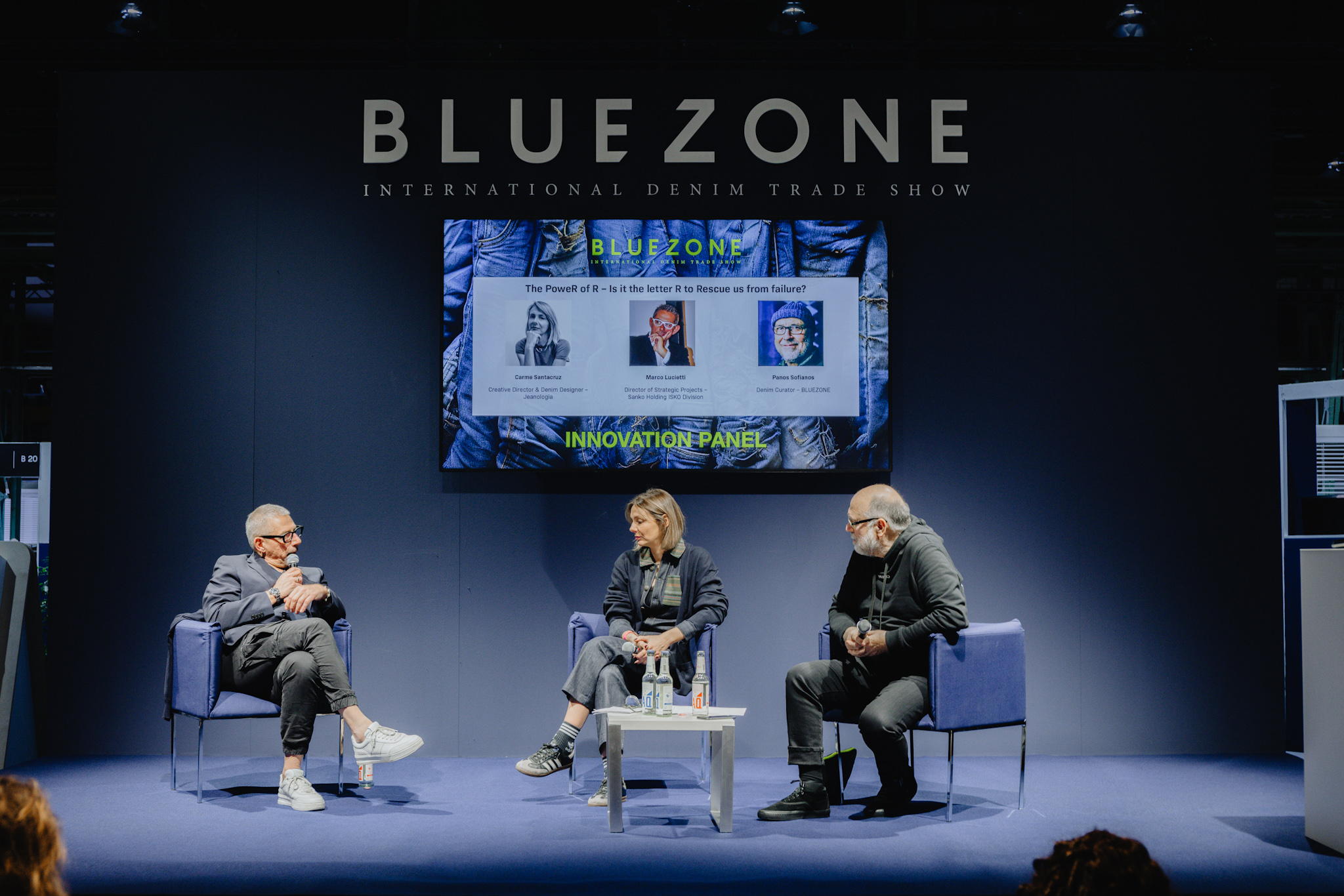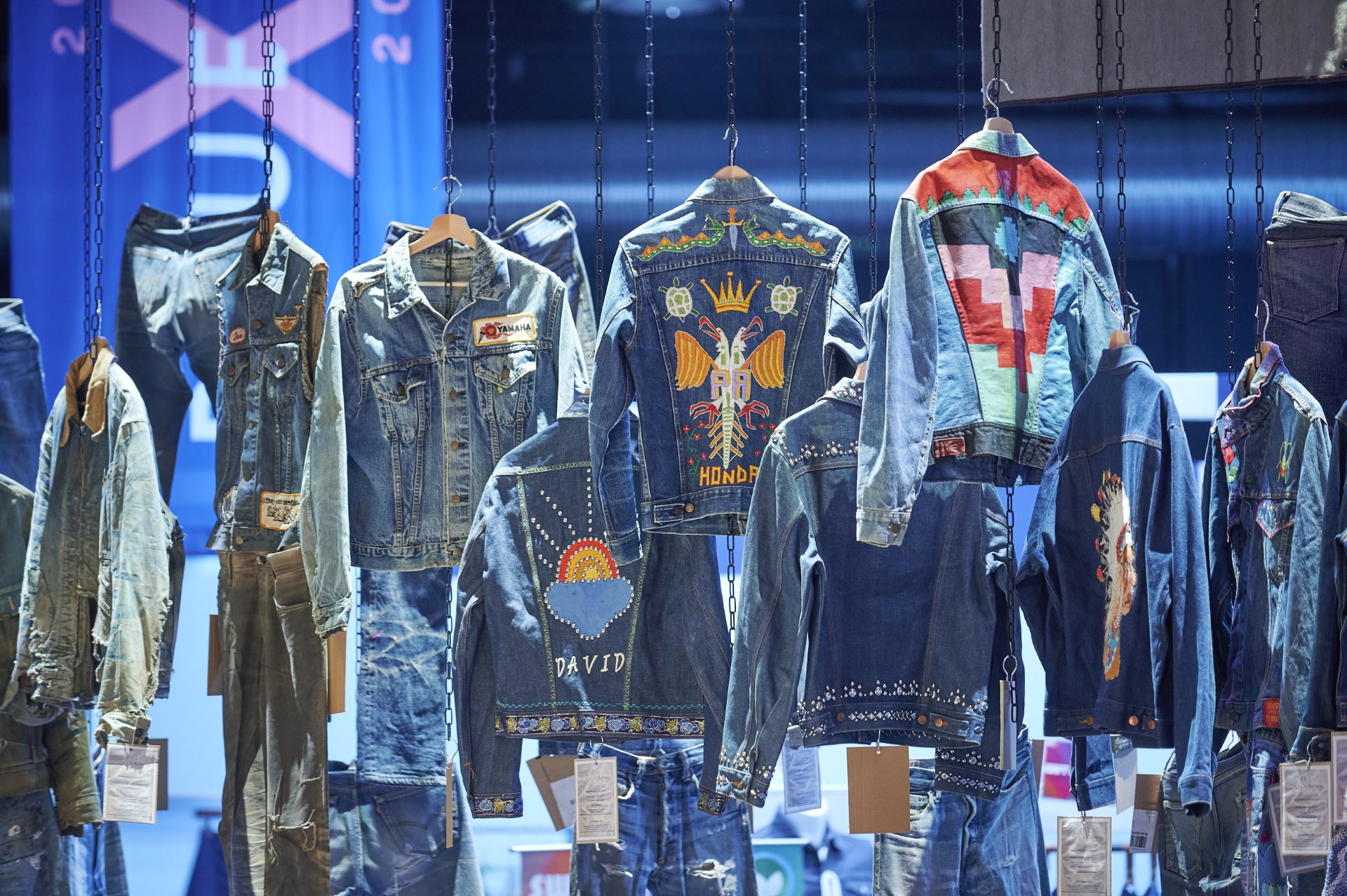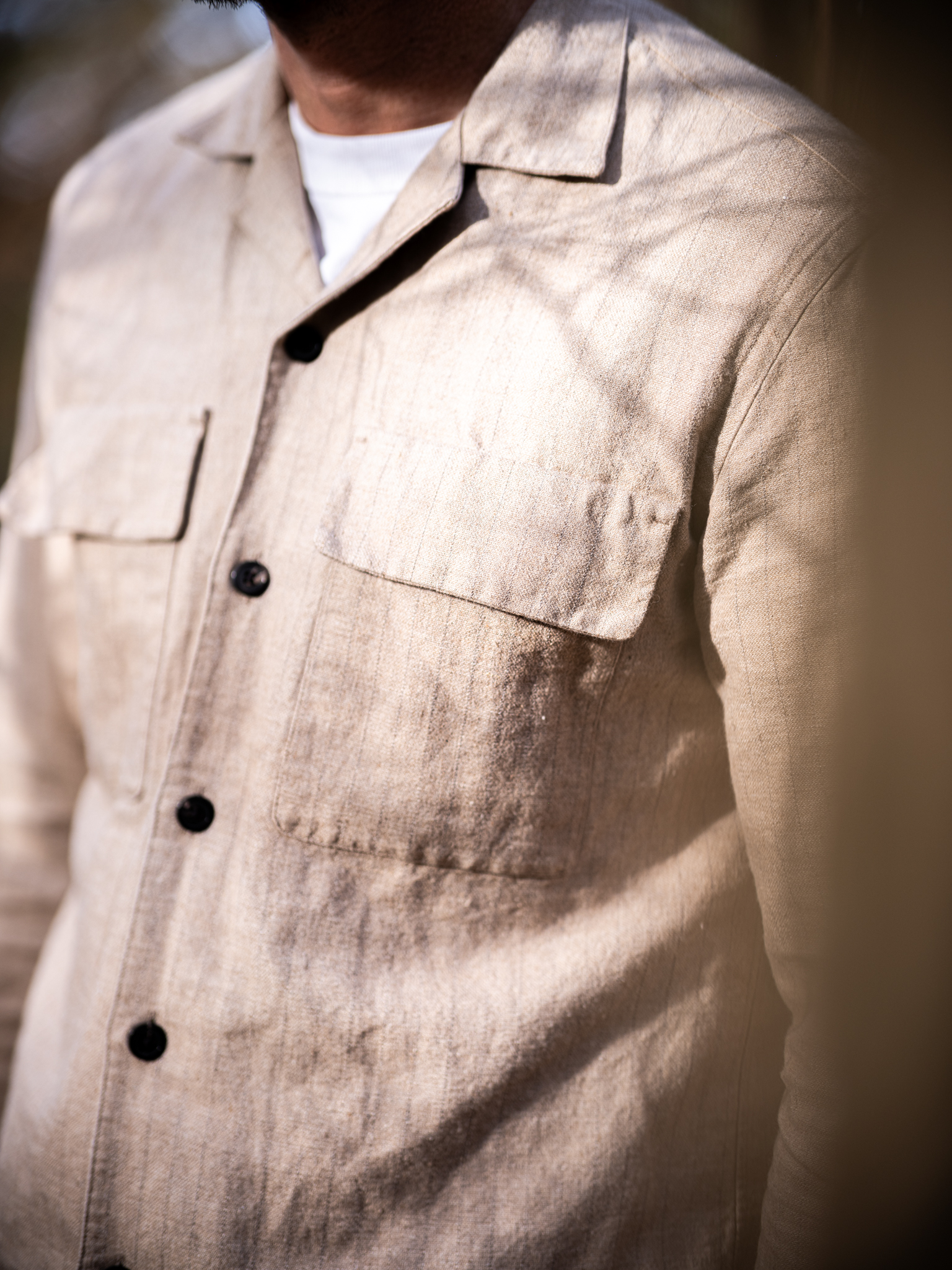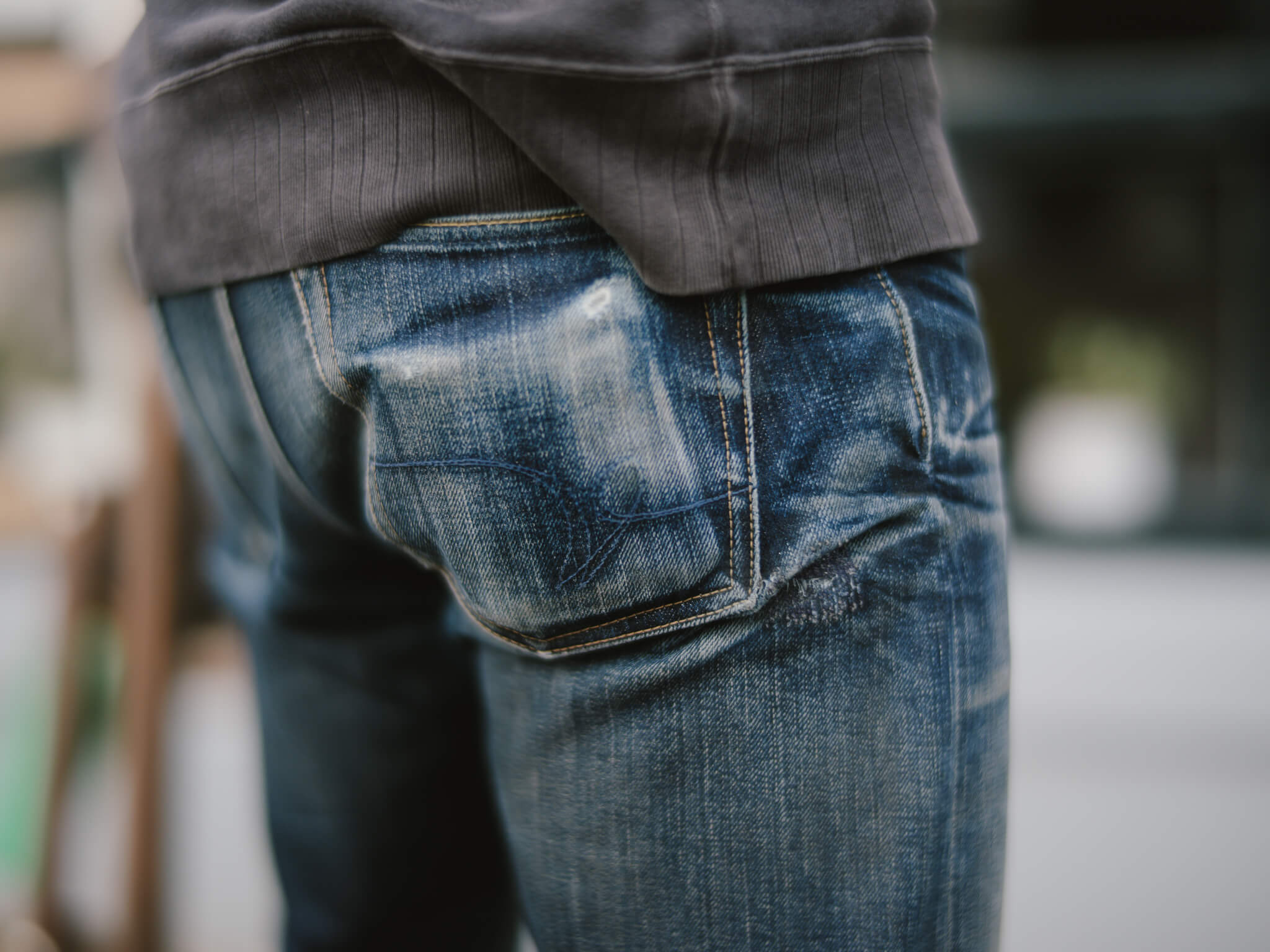‘Buy the best, they stand the test’ – The reincarnation of Dubbleware
In the early twentieth century there was a plethora of workwear and denim brands across America and while the ‘Big Three’ (Lee, Levi’s and Wrangler) had a level of dominance across the market, there were plenty of smaller independent brands who took a fair share of the stake.
From Boss of the Road to Underhill, workwear brands were prolific from coast to coast, and although many called states like California and Oregon home (primarily due to the Gold Rush), industrial cities in the Midwest and on the East Coast like Detroit and Boston were also on the map.
Unfortunately, due to the monopoly of larger brands and the costs associated with production, many smaller brands existed for only a mere few years. Others weathered the storm for a little longer, but by the post-war years only larger brands existed.
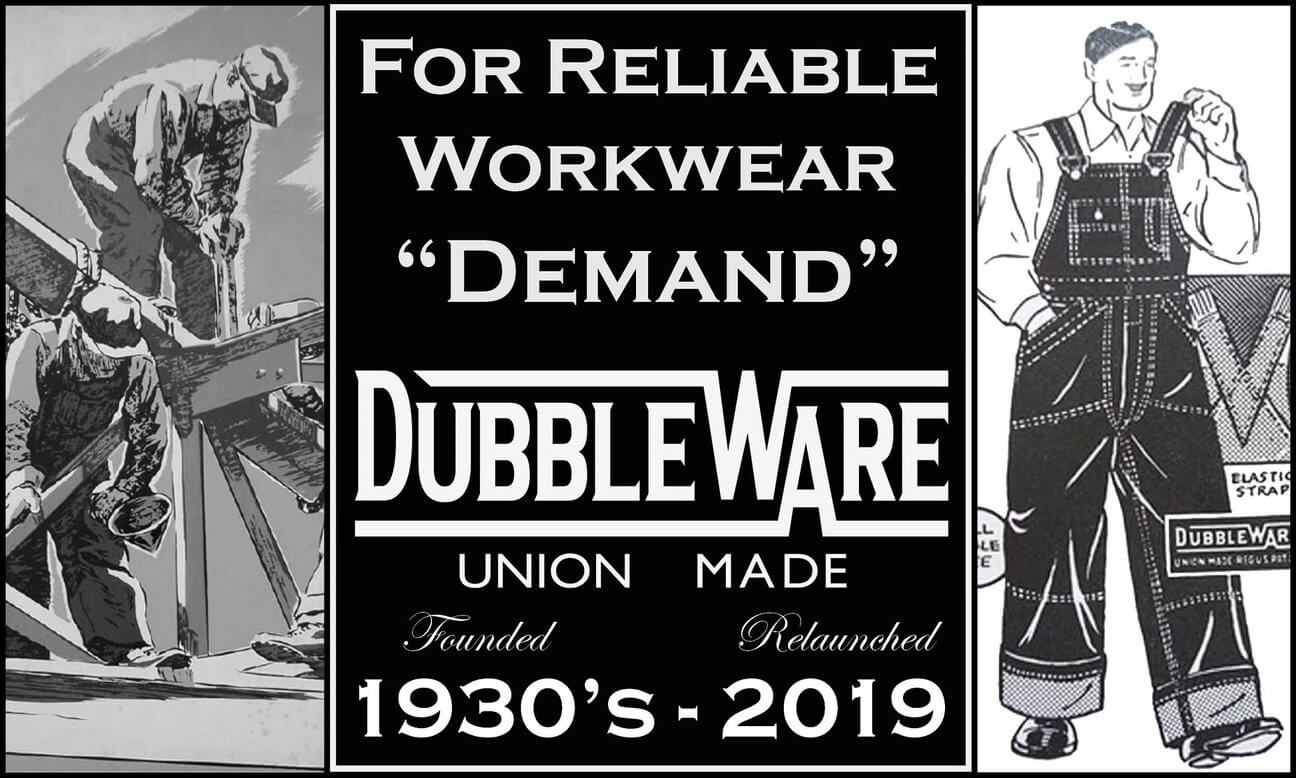 Image via Dubbleware.
Image via Dubbleware.
Fast forward to approximately 2008 and the advent of the ‘heritage denim’ trend, selvedge and historic workwear was on everyone’s minds. Existing brands like Levi’s and Lee channeled their decades-long back catalogue to offer revitalized classics for the modern market, but smaller brands with a focus on small batch production and making things ‘the good old way’ also began to crop up.
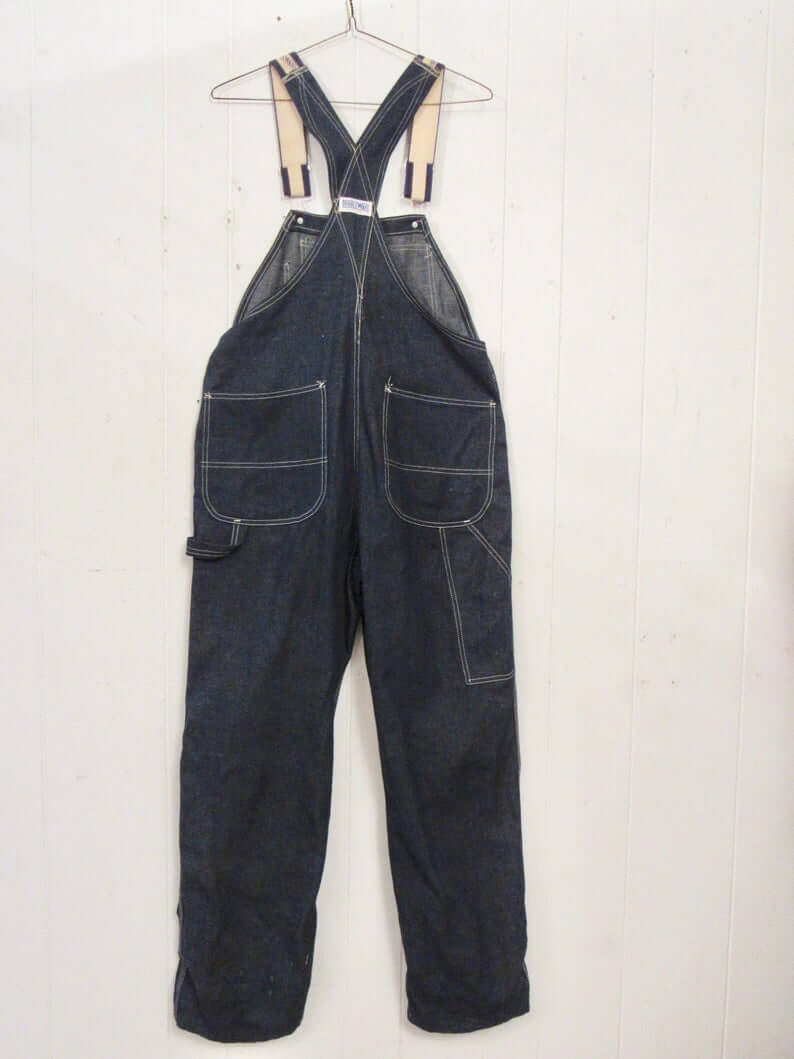
Image via Etsy.
But perhaps most interestingly, was the re-birth of historic workwear brands whom hadn’t produced clothing for almost a hundred years. One of those brands, was Dubbleware. Originally born in Boston, MA., Dubbleware was a workwear powerhouse and a household name in early American garment manufacturing. But now, the brand is back and while its current incarnation takes clear cues from the original, there is also a contemporary leaning in terms of fit and compatibility with modern lifestyle.
We wanted to learn more about the process behind bringing the brand back to life, what informs the product offering and what we might expect from the future Dubbleware. So, we sent a few questions over and you can find out all this – and more – below. Thanks for your time, Aron and Bella!
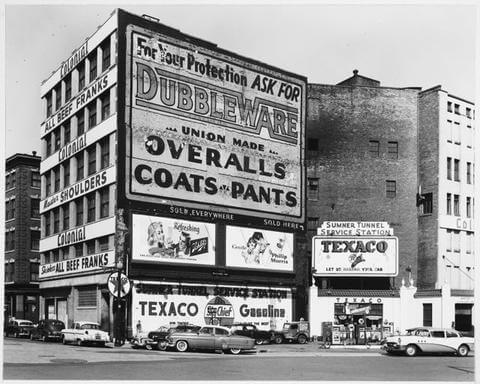
Image via Dubbleware.
Dubbleware is a historic American workwear brand – can you tell us more about the brand’s origins?
With pleasure – Dubbleware was originally created in 1918 by famed manufacturer M Hoffman, the first factory was in Hoffman’s home town of Boston, Massachusetts. Following this, the brand was quickly adopted by New England’s workers and farmers, becoming a huge part of Boston culture and going on to become the standard for workwear across America in the 1930s. It was one of the first brands to work with iconic fabrics such as Cone Mills denim and chambrays, which were incredibly sought after, and the brand were also one of the first to offer women’s workwear which was a rarity at that time.
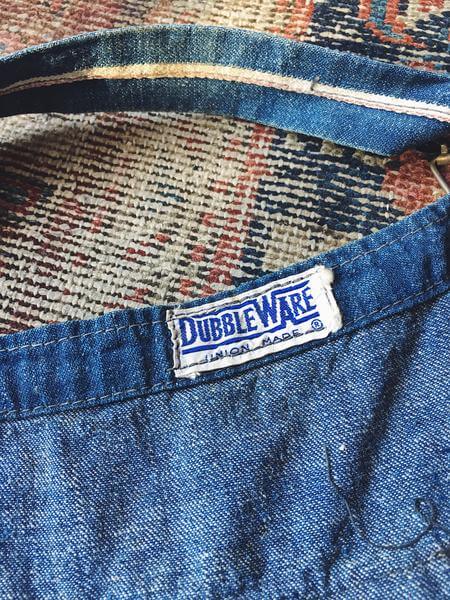
Image via Wooden Sleepers.
What made you aware of Dubbleware originally?
I’ve been in the industry for over 30 years, starting with distributing Replay Jeans back in the early 90s, then going on to work with the Godfather of denim, Adriano Goldschmied, on most of his eponymous products. I’ve always been intrigued by heritage brands throughout my career – we started working with Pendleton Woolen Mills almost 10 years ago for the European market and that is where it all stemmed from really. A lot of research, seeing the market change, consumers attitudes move towards investing in long-lasting, well crafted products.
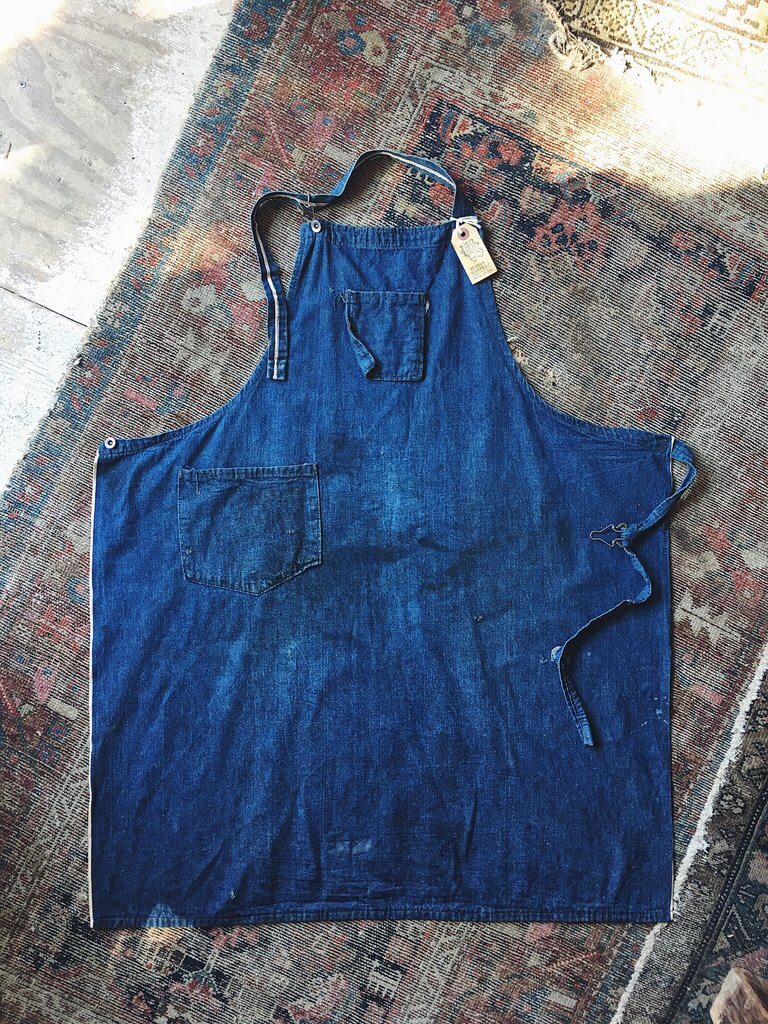
Image via Wooden Sleepers.
How did you go about reviving the brand and bringing it back to life? Was it a difficult task?
It is always difficult to bring a defunct brand back to life, but we were lucky that after thorough research on the historical workwear brands, we were fortunate enough to be able to locate the Hoffmans who gave us their blessing to relaunch it. They have given us a fantastic backlog of catalogues and old marketing material, so we can recreate true archival pieces. It really allows us to tell the fascinating story of Dubbleware.
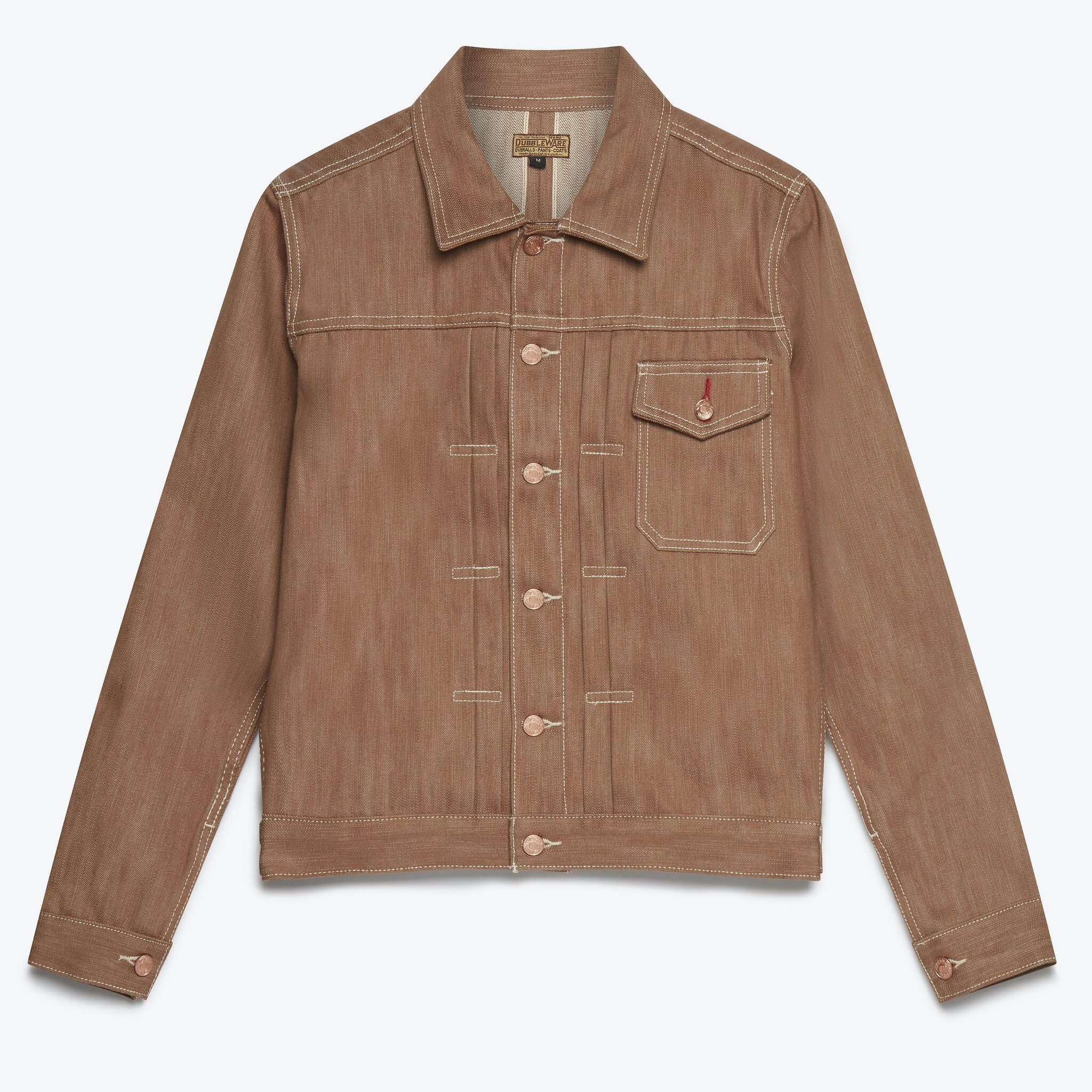 Image via Dubbleware.
Image via Dubbleware.
The collection focuses on workwear staples as well as some athletic inspired jersey. Talk us through how you’ve approached designing the collection and what to offer?
The collection is inspired by bringing old workwear silhouettes back to life, keeping true to Dubbleware’s history which also offered such a wide assortment of products – the collection needs to offer their true workwear styles like the Avignon Carpenter, or vice versa for AW20 you will see styles which are closer to classic Chino’s which were also an important part of the brand. All the graphics for the jersey are based around old marketing advertisements or logo’s that the brand used throughout its lifespan, so all products have a true meaning and story to them.
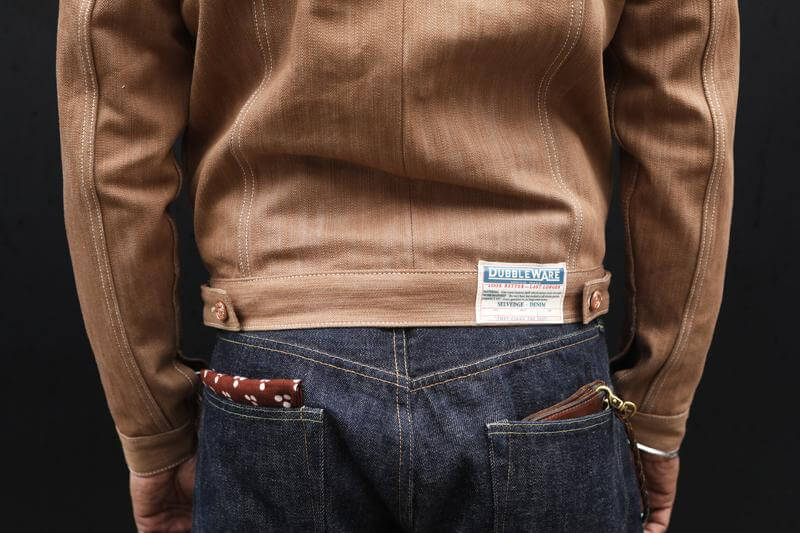
Image via American Classics.
Did you have any vintage Dubbleware garments when designing the new collection?
We’re actively in touch with the founder’s Son, Martin Hoffman, who was kind enough to send us archive pieces to work with. We also went off of any archive photos we could find, but something that was extremely important to us was keeping all the original branding, logos and tag line, something that just hasn’t dated.
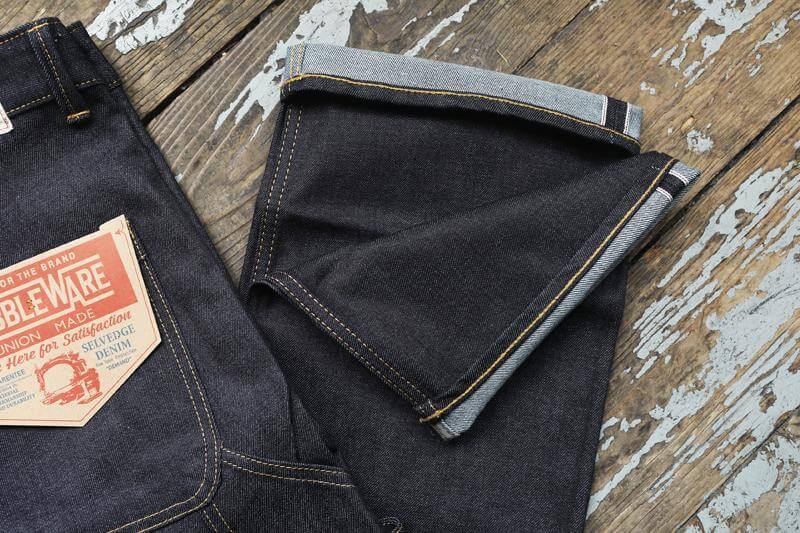
Image via American Classics.
Tell us about the denim you use for Dubbleware?
We try and use as much selvedge denim as possible, and to find unusual fabrics in limited runs. For example; herringbones pin stripes, denims with character like our brown selvedge, or our Navy Herringbone. These allow us to give a different spin to denim in its current guise. We would like to be able to work with American mills, but there is very little option (although we are aware of Vidalia). We take pride that most of the denim used is Selvedge and comes from Japanese owned mills.
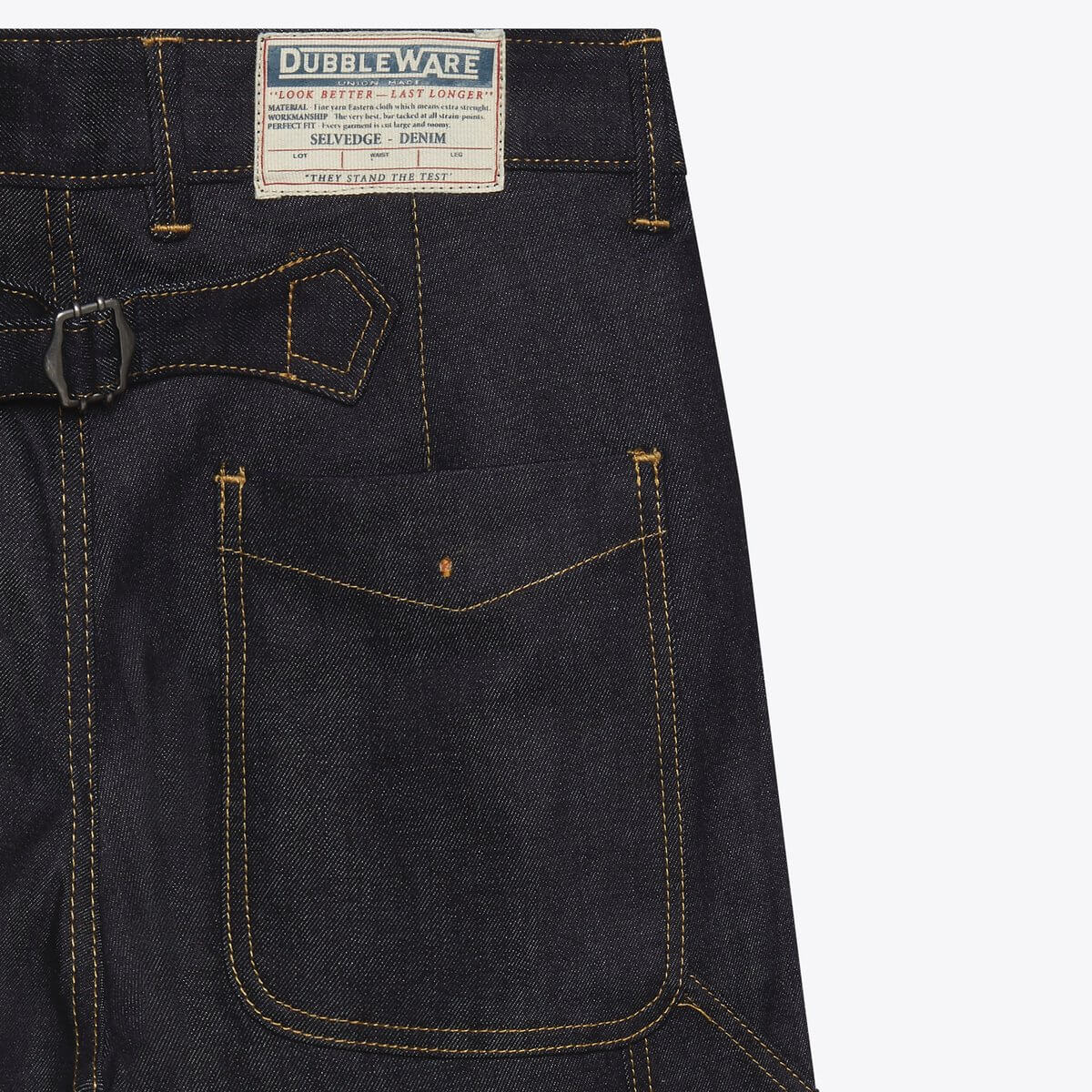 Image via Dubbleware.
Image via Dubbleware.
Where are Dubbleware garments made?
The range varies from piece to piece, with products being made in North America, Japan, and Japanese owned fabric houses in Hong Kong. We are lucky to work with factories who produce garments for some of the world’s best denim brands, so no matter where the product is made, the quality we feel is second to none.
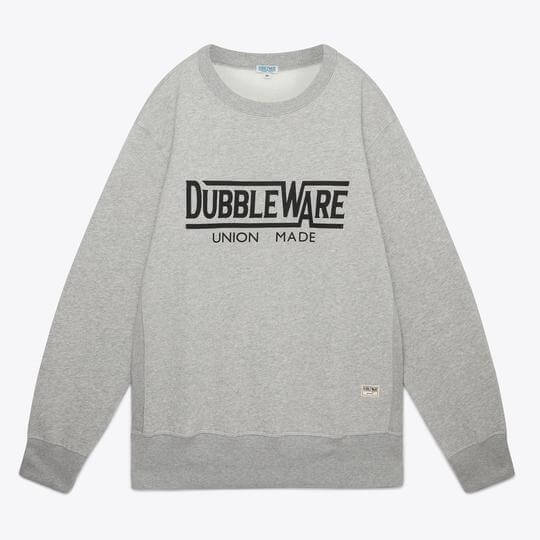
Image via Dubbleware.
Moving forward, what’s the intention for the future of the brand? Anything exciting coming up?
We’re hugely excited for AW20 and SS21, where you will see the product range really expand. We have worked further into integrating and educating a slightly younger audience through developing a new cotton based trouser collection for the customer who doesn’t want to wear denim, as well as via multi-brand retailers with exclusive products. There are new colorways in our now favored silhouettes, an introduction of our shirting program and in the development at the moment is our Women’s program, to really round the collection off.
You can see more of the Dubbleware offering via the brand’s website and keep up-to-date via their Instagram.
 Share
Share
 Tweet
Tweet
